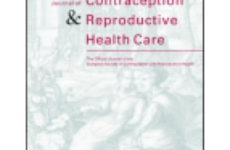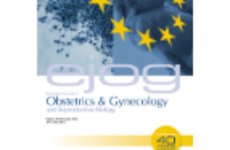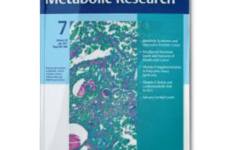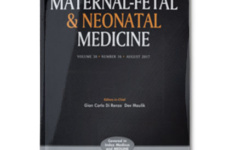Abstract
 This prospective cohort study aimed to evaluate the role of premature placental calcification in adverse pregnancy outcomes and identify its associated potential risk factors. We consecutively enrolled 293 women who presented to three academic medical centres from September 2011 to March 2013. Participants underwent transabdominal sonographies between 28–36 weeks of gestation in an attempt to determine placental maturity. We compared maternal and foetal outcomes between two groups of women, those with grade III placenta (n = 69) and those without grade III placenta (n = 224). Passive smoking was the only predictor of early placental calcification. There were more abnormal Doppler, low birth weight (LBW) and caesarean section (CS) deliveries observed in the preterm calcification group. No definite relationship existed between maternal hypertension (HTN), diabetes and other medical diseases with placental calcification. In conclusion, umbilical artery (UA) resistance index (RI) and absent or reversed end-diastolic velocity (AREDV) were observed more often in preterm placental calcification. Serious antepartum follow-up should be advised for these mothers.
This prospective cohort study aimed to evaluate the role of premature placental calcification in adverse pregnancy outcomes and identify its associated potential risk factors. We consecutively enrolled 293 women who presented to three academic medical centres from September 2011 to March 2013. Participants underwent transabdominal sonographies between 28–36 weeks of gestation in an attempt to determine placental maturity. We compared maternal and foetal outcomes between two groups of women, those with grade III placenta (n = 69) and those without grade III placenta (n = 224). Passive smoking was the only predictor of early placental calcification. There were more abnormal Doppler, low birth weight (LBW) and caesarean section (CS) deliveries observed in the preterm calcification group. No definite relationship existed between maternal hypertension (HTN), diabetes and other medical diseases with placental calcification. In conclusion, umbilical artery (UA) resistance index (RI) and absent or reversed end-diastolic velocity (AREDV) were observed more often in preterm placental calcification. Serious antepartum follow-up should be advised for these mothers.
Impact Statement
- Placental calcification is a physiological phenomenon but normally, a grade III placenta is not frequently found until 36 weeks of gestation (so is called preterm placental calcification – PPC). There is currently a lack of consistent evidence on the clinical significance of PPC and pregnancy outcome. The present study was designed to evaluate the role of PPC in adverse pregnancy outcomes.
- In our study, although none of the pregnant women were smokers, we found that passive smoking was the only predictor of PPC. Abnormal umbilical artery Doppler waveforms considerably and absent end diastolic velocity pattern significantly were observed more often in the PPC group.
- We observed that PPC can be a landmark for high-risk pregnancy and an alarm sign for placental dysfunction. So, close antepartum follow up should be advised for these mothers. Regular and frequent foetal wellbeing tests should be done to prevent pregnancy complications. Certainly larger and more extensive study can provide more valid results.
Keywords: Preterm placental calcification, Doppler parameters, maternal outcome, foetal outcome
Journal of Obstetrics and Gynaecology Volume 37, 2017 – Issue 5
DOI: 10.1080/01443615.2017.1285871
hraf Jamal, Maryam Moshfeghi, Saeedreza Moshfeghi, Nooshin Mohammadi, Elahe Zarean &















